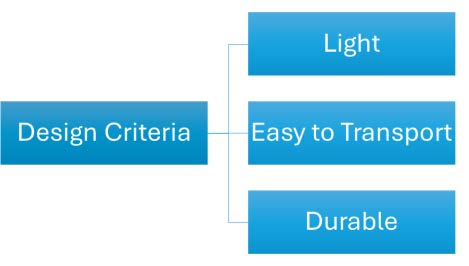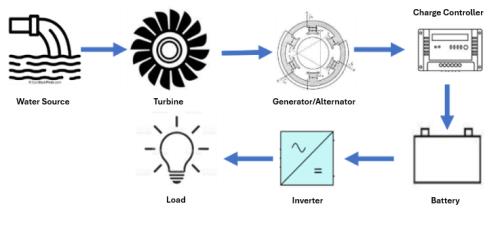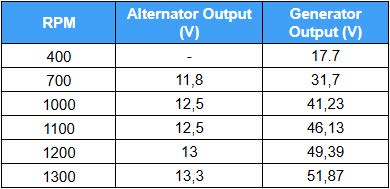Dr.Bryan Denov, S.T., M.T.
Sekolah Teknik Elektro dan Informatika
Abstract
Indonesia’s forests significantly support the nation’s economy, with local communities relying on forest products for their livelihood. However, sustainable harvesting often requires extended stays in remote areas, where the lack of electricity forces workers to depend on firebased lighting, increasing safety risks and reducing productivity. To address this issue, we developed a portable pico-hydroelectric system tailored to the lowstrength water currents commonly found in Indonesian forests. The system incorporates two alternative power generation devices: a car alternator and a generator, each capable of producing up to 1 kW. Energy generated is stored in a 45 AH battery, which stabilizes voltage before converting it to AC power through an inverter, ensuring compatibility with standard electrical devices. This system powers forest outposts, charges essential devices, and runs tools like drills, enhancing safety and efficiency while supporting sustainable forest activities and community wellbeing.
Keyword: Pico-Hydro, Alternator, Generator,
Forest Outpost, Lighting
Introduction
Indonesia generates significant income from its rich biodiversity, particularly from forest products harvested predominantly by local communities. However, ensuring the sustainability of these activities remains a challenge, requiring selective harvesting approaches that often demand extended periods in the forest.
One major challenge faced by harvesters is the lack of reliable lighting, as they typically rely on fire-based illumination due to the absence of electricity. This not only poses risks such as fires and gas poisoning but also increases workplace accidents and reduces efficiency.
To address this, a new approach is needed to provide sustainable electricity in remote forest areas. Harnessing the abundant water flows commonly found in Indonesian forests offers a promising solution. Institut Teknologi Bandung has developed an innovative technology known as the Pico-Hydro power generation system, which efficiently utilizes low-strength water currents and low head to generate electricity, ensuring safety, sustainability, and productivity for forest communities.
Research Method
The methodology begins with a preliminary survey, the results of which inform the design tailored to the specific site and conditions.
Following the location selection process, the next step involves designing a suitable product. The design approach focuses on modifying the conventional pico-hydro system into a portable pico-hydro power generator that is lightweight, easy to transport, yet remains robust and durable.
After completing the previous steps, the next phase involves selecting the necessary components. Our team has identified two alternative power generation devices: a car alternator and a generator, each capable of producing up to 1 kW of output power. These devices will charge a 45 AH battery, which serves as a voltage stabilizer before connecting to the inverter. The inverter then converts the power to AC current, ensuring compatibility with common electrical devices, such as lights and chargers. This approach simplifies maintenance and replacement in the event of equipment failure.



Discussion & Result
During the development process, our team encountered several challenges, particularly with the generator and alternator used in the system. For the alternator, the main issue was the difficulty of rotation when water flow rate and head height were suboptimal. However, the alternator has the advantage of being equipped with a built-in regulator and sensor, which automatically cuts off charging to the battery when the alternator reaches overspeed or the battery is fully charged.
On the other hand, the generator demonstrated advantages such as easier rotation and lower initial torque requirements compared to the alternator. Additionally, the generator is more versatile in terms of installation, as it can be mounted directly on the shaft or connected via a fan belt/pulley system. Its drawback, however, lies in the absence of a built-in regulator and sensor, necessitating the use of additional components such as a solar charge controller (SCC) to ensure stable charging and to protect the battery from potential damage.

Outcome

